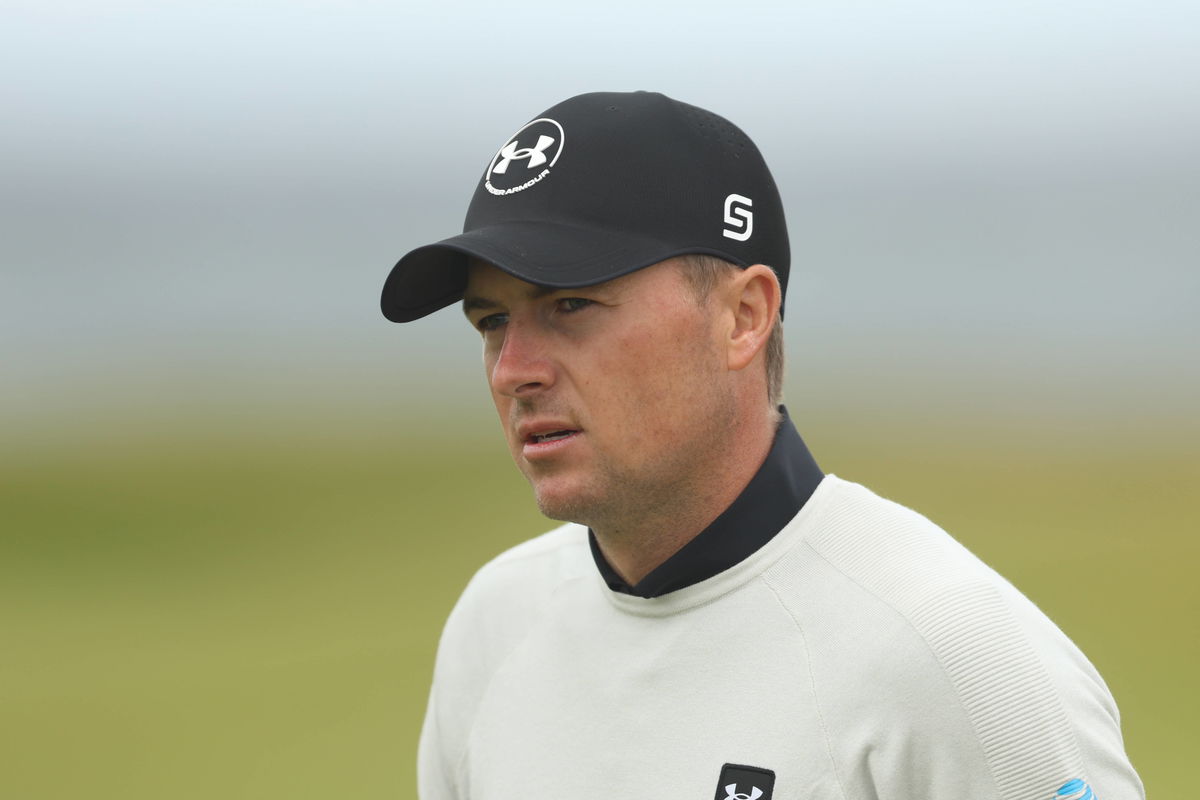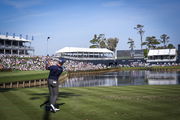
Imago
Golf – 2024 Open Championship – Day Four – Royal Troon – Sunday 21st July 2024 Jordan Spieth PUBLICATIONxNOTxINxUK

Imago
Golf – 2024 Open Championship – Day Four – Royal Troon – Sunday 21st July 2024 Jordan Spieth PUBLICATIONxNOTxINxUK
When Steve Wheatcroft finally stepped through the gates of Augusta National Golf Club this spring, he did so not as a competitor but as a father. The former PGA Tour pro had never seen the Masters in person, and he was determined to make the most of it with his young son, Chase Wheatcroft. “The expectations are through the roof,” Steve said on his podcast The Uncomfortable Chat. “Nothing’s going to live up to this. And it blew him out of the water.” So they spent the day walking the entire course, securing prime seats at the twelfth tee, the sixteenth tee, and finally the corner of the eighteenth green, where the former pro finally caught Jordan Spieth.
Watch What’s Trending Now!
Wheatcroft, who made a career switch to a financial advisor last year, shared his experience of the legendary course. “It’s one of the most magical places I’ve ever seen, especially the practice round days. You’re thinking, if you could get one good seed on one hole, it’d be a cool experience,” Steve said during his conversation with Walker Cup captain Nathan Smith. And there, a moment unfolded that meant more than any view of the Augusta’s Amen Corner. Spieth was practicing chips and putts on the eighteenth, surrounded by kids hoping for an autograph. Wheatcroft reassured them, “He’ll be over, guys. Don’t worry about it.” Minutes later, Spieth’s caddie, Michael Greller, spotted Wheatcroft in the crowd, and Spieth walked over to him.
For Chase, it was a moment he will cherish for the rest of his life, but for Wheatcroft, it was a gesture of respect from a player at his peak while his own had wound down years earlier. His son went, “Oh my god, do you know him?” And Wheatcroft’s answer surely makes every father around the world a little proud. “I’m like, ‘eh, we knew each other back in the day from something.’ So, yeah. But it was a cool, cool experience, man. What a place!”
ADVERTISEMENT
For Wheatcroft, that moment underscores how far he has traveled on his own journey.
Once a PGA Tour pro, he stepped away from the sport in 2019, later speaking openly about the struggles that linger when the spotlight fades. In recent years, he has been turning that honesty into advocacy, building the Mulligan Foundation to support players fighting with the mental toll of professional golf. That work drew praise from Colt Knost, who called it “awesome what he’s doing” because “you can go to some very dark places” when the game stops giving back. Against that backdrop, Spieth’s quiet acknowledgment at Augusta carried even more significance.
That moment with Wheatcroft was telling; a reminder that even as he works through his own challenges, Jordan Spieth has not lost sight of the connections that define the game.
ADVERTISEMENT
Top Stories
Who Is Charley Hull’s Ex-Husband? Is LPGA Star Currently Dating?

Pro Suffers Disqualification at PGA Tour Q-School After Several Players Withdrew Abruptly

Golf World Feels Sorry for PGA Tour Hopeful as Meltdown Over Q-School Stress Is Caught on Camera

Donald Trump Puts Public Golf Courses on Notice Amid Control Dispute

Brooks Koepka Takes up New Role Amid LIV Golf Exit Rumors Reaching Boiling Point

Can Jordan Spieth find his stride again?
There are mornings, Jordan Spieth admits, when his right wrist still reminds him of the surgery that nearly reset his career. At times it feels swollen, heavy, and even “twice the size of the other.” Yet even as the discomfort lingers nearly a year later, his outlook has shifted.
ADVERTISEMENT
What once was a source of frustration no longer controls his future. “The feeling wears off very quickly,” he said during the pro-am at the FedEx St. Jude Championship. “There’s not one day where I’ve woken up and said it feels totally normal yet. It’s just part of the process.”

Imago
PGA, Golf Herren the Memorial Tournament presented by Workday – Third Round May 31, 2025 Dublin, Ohio, USA Jordan Spieth plays his shot from the 18th tee during the third round of the Memorial Tournament presented by Workday golf tournament. Dublin Ohio USA, EDITORIAL USE ONLY PUBLICATIONxINxGERxSUIxAUTxONLY Copyright: xAaronxDosterx 20250531_add_db4_113
That process began last August in Colorado, when the surgeons repaired his tendon sheath, which had been slipping in and out since the spring of 2023, compromising his grip strength and sometimes even leaving his hand numb. For a player built on touch and control, the injury raised real doubts about whether he could sustain his career. Yet he returned to competition in February at Pebble Beach, and while the results have been uneven, the overall trajectory is encouraging.
ADVERTISEMENT
Spieth already has four top-10 finishes in 2025, double his total from the previous year, and arrives at the playoffs ranked 48th in the FedEx Cup standings, positioned to move on to the BMW Championship with a solid showing.
What has changed most, however, is his state of mind.
“I’m super, super happy about everything that’s happened [surgically],” Spieth exclaimed. “Looking back, it was hard because I would be playing and it would feel fine, but then it would dislocate randomly, and it was like, ‘Do I need to do something? Do I not?’ Structurally… it was a reset and a chance to position things better for the long-term.” Doctors told him it could take up to 13 months before his wrist would feel completely healed.
ADVERTISEMENT
Now, with that milestone approaching, Spieth should look at it as an opportunity and the bigger picture as a reason to believe the best is still ahead.
ADVERTISEMENT
ADVERTISEMENT
ADVERTISEMENT

